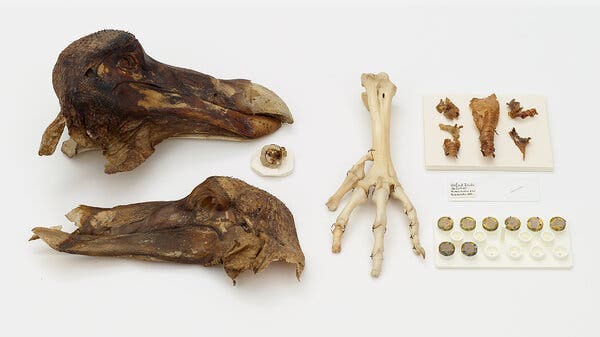The dodo was a flightless bird about the size of a male turkey that had a long, hooked beak and the goofy charm of an emperor penguin. Its ancestor first appeared on Earth more than 25 million years ago, and by 1662, because of humans, it had vanished from Mauritius, a remote island in the Indian Ocean, the only place it ever existed.
The dodo has since become fixed in society’s imagination as the very emblem of ineptitude, an evolutionary clown — an impression greatly helped by the bird’s appearance in “Alice’s Adventures in Wonderland” in 1865. In 1941, the humorist Will Cuppy wrote that the dodo — with an ugly face, a misplaced tail, too-small wings and a prominent stomach — seemed to have been invented for the sole purpose of becoming extinct. “You can’t look like that and survive,” he mused. “Or can you?”
Neil Gostling, a paleobiologist at the University of Southampton in England, listens to these aspersions and laughs. “Eighty-three years later, the idea persists that dodos were slow, fat, useless balls of feathers that blundered into their own demise,” he said. “The fact is that the birds were fast, agile and, before being wiped out, had been doing their thing and doing it incredibly well for about 12 million years.”
Dr. Gostling was an author of a recent paper published in The Zoological Journal of the Linnaean Society that tries to set the record straight. By revisiting 400 years of literature and analyzing fossil evidence — including the world’s only surviving soft tissue from a dodo, kept in the Oxford University Museum of Natural History — his team of scientists undertook the most comprehensive review to date of the bird’s taxonomy and evolutionary history.
The team’s research forms the bedrock of a broader project to shed light on the dodo’s role in the ecosystem of Mauritius, which was once almost entirely a dense forest of ebony and bamboo. Julian Hume, an avian paleontologist at the Natural History Museum in London who collaborated on the study, said of the dodo, “Perhaps no creature has been so widely written about yet so poorly understood.”
